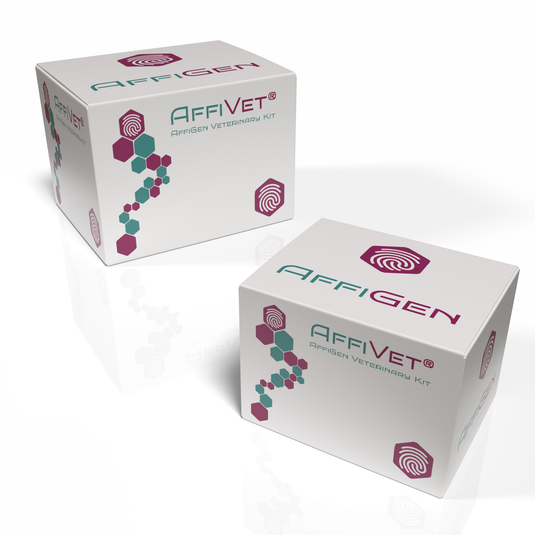Porcine Toxoplasmosis IgG AntibodyELISAtest kit
1.Usage
Porcine Toxoplasmosis IgG antibody test kit is used for the detection of the Toxoplasmosis antibodies in porcine serum.
2.Principle
The test kit is enzyme immunoassay for the detection toxoplasmosis antibodies in porcine serum. Toxoplasmosis antigens are coated on 96-well plate, add sample into wells and then antibodies bound specifically by antigens, the unbound antibodies and other components will be removed by washing. Next add enzyme conjugation to specifically bind with the compound of antibodies and antigens on the microplate. The unbound enzyme conjugation will be removed by washing. Add the TMB substrate in the well, react to a blue product. At last, end the reaction by adding stop solution.
3.Components
| 1 | TOX antigencoated microplate | 96T X 2 | |
| 2 | Enzyme conjugate | 22ml | yellow lid |
| 3 | Sample diluent solution | 50ml | transparent lid |
| 4 | TOX-IgG Negativecontrol serum | 1.5ml | green lid |
| 5 | TOX-IgG Positivecontrol serum | 1.5ml | red lid |
| 6 | Substrate | 12ml X2 | orange lid |
| 7 | Stop solution | 12ml | blue lid |
| 8 | 20×concentrated washing buffer | 50ml | white lid |
| 9 | Adhesive Foil | 2 pieces |
|
| 10 | Instruction | 1 piece |
|
4.Material Required not Provided
1 Microplate Reader (Dual-wave length: 450/630 nm).
2 Microplate Washer.
3 Micropipettes, adjustable (Single-wave length 1-100ul、0.5-10ul、multi-wave length 30-300ul).
4 Constant temperature box or water bath box.
5 Oscillator.
6 Disposable tips (10ul, 200ul)
7 Deionized water
5.Solution preparation
1) Sample dilute: Dilute sample with the sample diluent solution at 40 times.(for example: 117ul sample diluent solution + 3ul serum), the negative control and positive control serum do not need to dilute.
2) Washing solution preparation: return 20×concentrated washing buffer into room temperature before use and shake until crystallization dissolved completely, then dilute the 20×concentrated washing buffer with distilled water or deionized water at 20 times (for example: 10ml 20×concentrated washing buffer + 190ml distilled water).
6.Procedure
1 Adding sample: Take out the required coated plates according to sample quantity (Can be detached) and record the sample position on a worksheet. Set 2 wells for negative control serum and 2 wells for positive control serum, add undiluted negative and positive control serum to its well accordingly, 100 μL/well. Others are wells for samples, add 100μL/well of the diluted sample.
2 Mix gently for 30s, incubate at 37℃ for 30 min.
3 Remove adhesive foil. Pour the liquid out of the wells, add Washing solution into each well fully, stand for 10s. Repeat 3 times, at last time pat to dry on absorbent paper.
4 Add 100 μL enzyme conjugate into each well, cover plate with new adhesive foil.Incubate at 37 ℃ for30 min.
5 Repeat step 3(washing).
6 Add 100μL substrate into each well, mix properly,incubate for 10 min at 37 ℃ in the dark with new adhesive foil.
7 Add 50μL stop solution into each well, mix gently and determine the result within 10 min.
7.Results
Cut-Off Value (COV) = Negative control average OD value X 2.1 (calculate as 0.08 when Negative control OD value is less than 0.08 )
Generally speaking, the TOX-IgG Positive control average OD value should be greater than or equal to 0.60, the TOX-IgG Negative control average OD value should be less than 0.15, otherwise the test is invalid, need to retest.
If the sample OD value≥2COV, the sample is classified as POSITIVE for TOX-IgG antibodies;
If If the sample OD value<COV, the sample is classified as NEGATIVE for TOX-IgG antibodies.
If between positive and negative control value, it is skeptical.
8.Product performance
1. Specificity: to test 30 negative control serums, no false positive.
2. Sensitivity: to test 30 positive control serums, no negative.
3. Precision: CV(%)no bigger than 15%(n=10)
4. Stability: Store at 2℃~8℃ for 12 months or store at 37℃ for 3 days, the result can reach the above 3 standards.
9. Precautions and warnings for users
1. This test kit is suitable for in vitro diagnostics.
2. Wear glove and working clothes when operate, treat the test kit as containing infectious material.
3. Experiment rubbish should be dealt with high pressure steam sterilization at 121 ℃ for 30 minutes, or treated with 5.0g/L sodium hypochlorite disinfectant for 30 minutes, then discard.
4. MicroWell plate removed from the refrigerated environment should be balanced moisture to dry at room temperature, then can be opened. Put back unused MicroWell plate into dry foil bag and sealed at 4 ℃. Unused liquid reagent should cover caps, store at 2-8 ℃ in dark with other group components.
5. If the 20×concentrated washing buffer appears crystal, it is normal, put at 37℃until been dissolved.
6. Should use Micropipettor to add sample and reagents, and often proof its accuracy.
7. When adding washing buffer, should be full but no overflow, avoid appearing free enzyme at mouth of well or cross pollution between wells.
8. Stop solution is corrosive, use large amount of water to wash immediately when touch the skin or clothes.
Specifications:96 wells × 2.
Expiry date:12 months.
Storage: at 2-8 ℃, don’t expose in strong light, not freeze.
Production Date:On outer-packing of the test kit.

